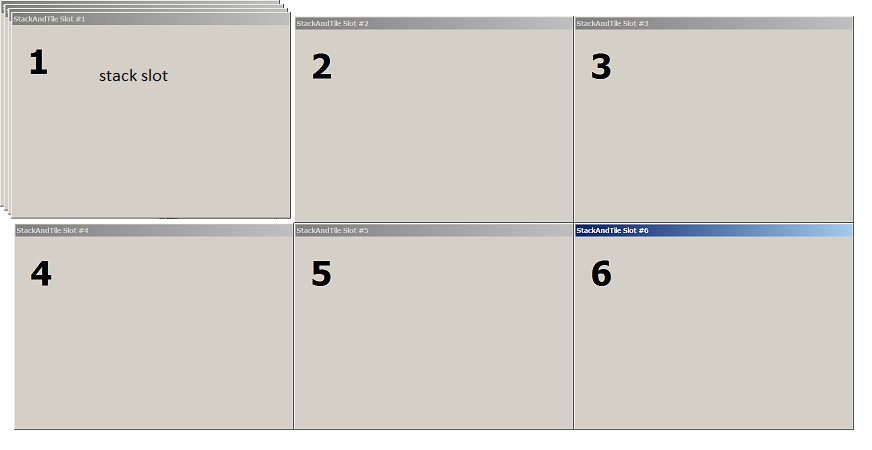To give you a better idea of how the StackAndTile works, here is a description of the ideas behind the program.
StackAndTile will split up your screen into different "slots" where your tables will be placed. Look at the image to the right. This is an example layout of 6 slots on a screen.
Stack
Slot 1 in the image is offset slightly just to show you that it is special. Normally it is placed in line with the other slots, and you can configure that. This is the "stack slot". Here, many tables will be stacked on top of each other. You will only see one table, while the rest will be underneath. If you have ever dragged one window on top of another, then you are familiar with this concept already. In the example image, you can see that there are more windows underneath. This is just to show the concept. In reality, all of the windows will be directly on top of each other, so you will only see the topmost table.
Grid
Slots 2-6 in the image represent what is known as the "grid" of tiled tables. Your tables will occupy these slots as needed. This is where you will focus your attention for the 'important' tables. There will only be a maximum of one table in each of these grid slots (whereas the 'stack slot' will have many tables).
As you play, tables will move back and forth between these two areas: "stack" and "grid". It is useful to think in terms of these two groups. In general, the stack will contain tables where you are not in a hand, and the grid will contain the tables where you are in a hand. This way, all the tables on your screen will be important (except slot 1). Your screen space will be used in the most efficient manner.
You can obviously have more than 6 slots. It all depends on the slot size that you choose as well as the size of your monitor. You can also configure the slots to overlap if you wish.

